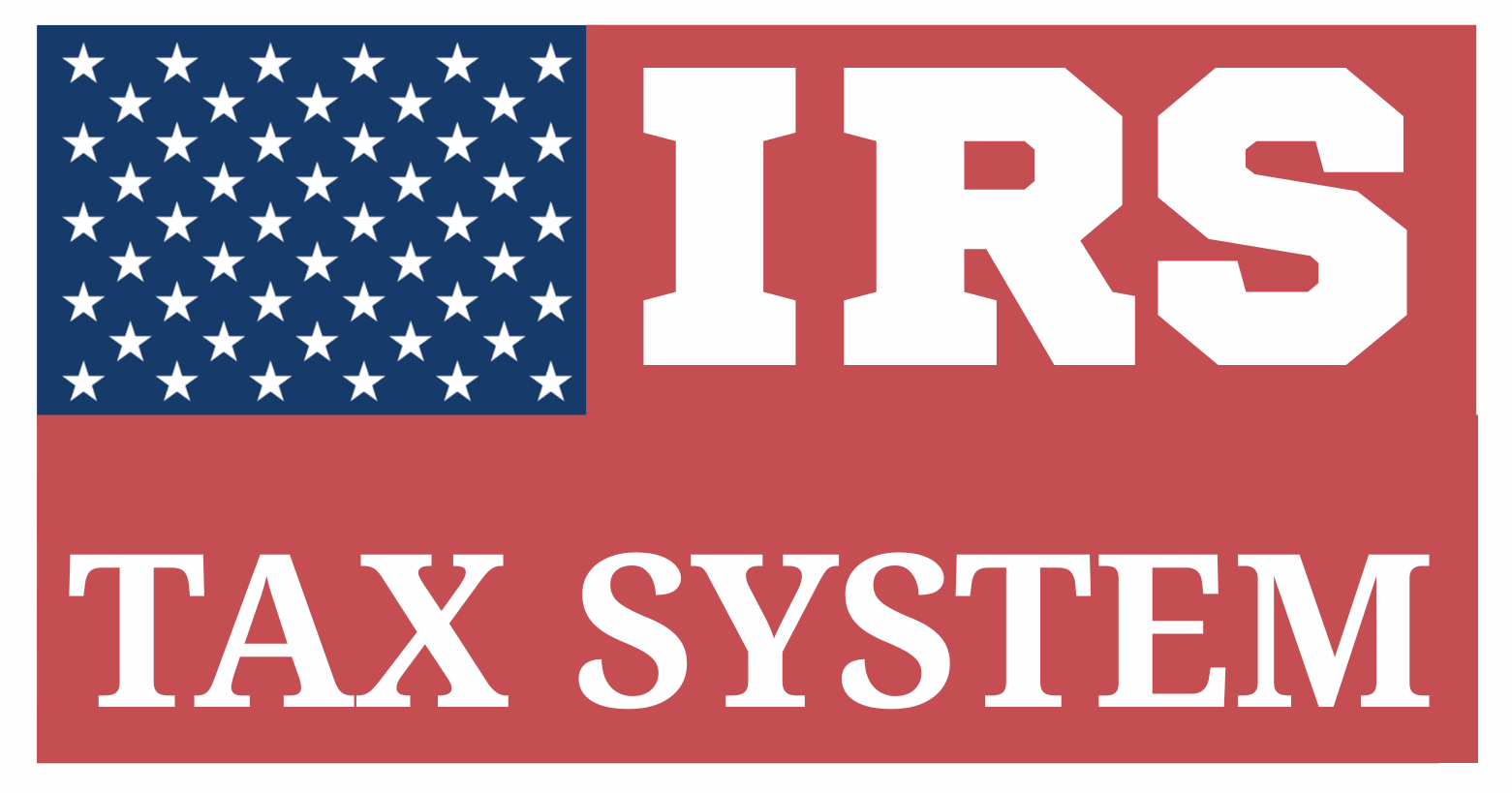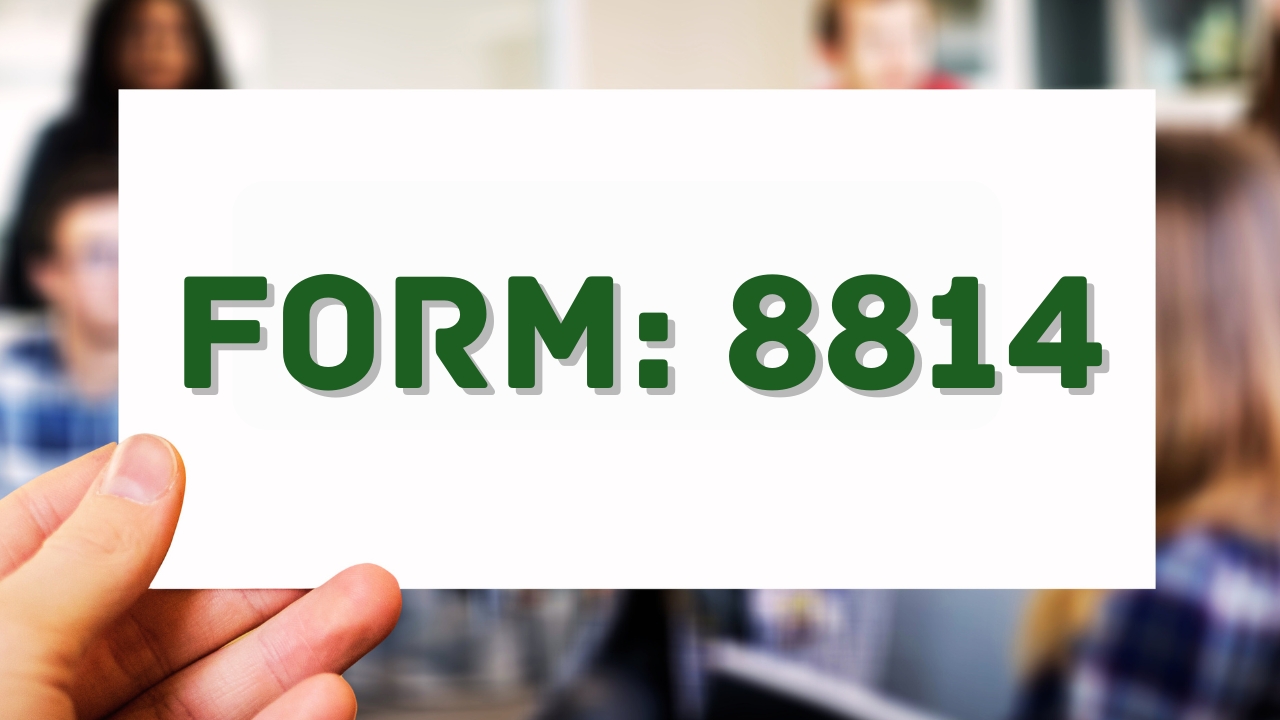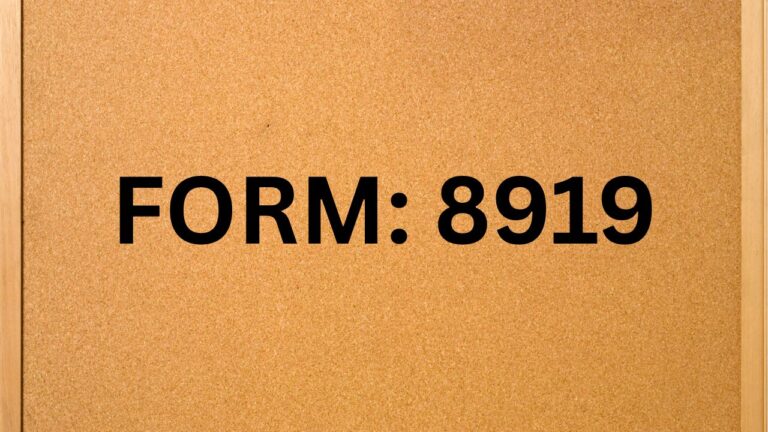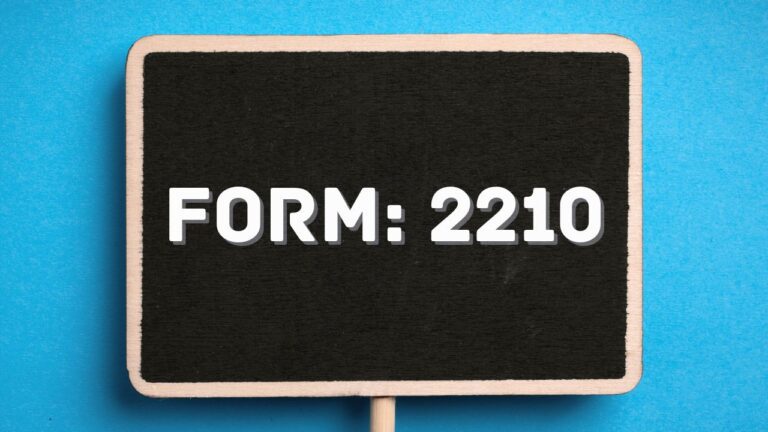Form 8814: Simple & Easy Review
Table of Contents
Form 8814-Parents Election to Report Child’s Interest and Dividends
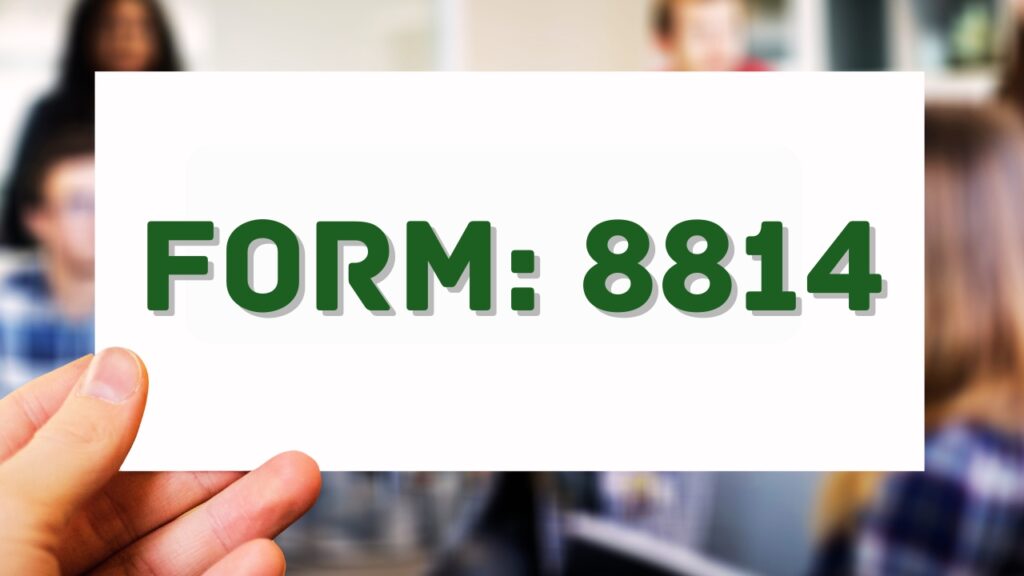
Form 8814: Parents’ Election to Report Child’s Interest and Dividends is a special-purpose tax form that allows parents to report their child’s unearned income directly on their own income include the child’s income on your own tax return instead of having them submit a separate return.
This form applies only to certain types of income (interest and dividends) that are classified as unearned, and only when specific conditions are met. It serves as a convenience for families who wish to consolidate tax filings, though it can sometimes result in higher tax liability.
Purpose of IRS Form 8814
The primary purpose of IRS Form 8814, Parents’ Election to Report Child’s Interest and Dividends, is to allow parents to include their child’s unearned income (specifically interest and dividend income) on the parent’s own federal income tax return, rather than requiring the child to file a separate tax return.
This election is designed to simplify tax filing for families, particularly when a child has a small amount of investment income and would otherwise need to file a separate return solely for that reason.
Detailed Breakdown of the Purpose
1. Simplifies Filing Requirements
- Instead of preparing a full tax return (Form 1040) for the child, the parent can report the income using Form 8814 attached to their own Form 1040.
- This is especially helpful for families with young dependents who have passive investment income from savings accounts, bonds, or stock dividends.
2. Applies the “Kiddie Tax” Rules
- The form facilitates the kiddie tax, a set of rules introduced to prevent income shifting—where parents move investment assets into their child’s name to exploit lower tax brackets.
- By using Form 8814, the child’s unearned income is taxed at the parent’s higher tax rate, not at the child’s usually lower rate.
3. Consolidates Taxable Income Reporting
- The child’s interest and dividend income is combined with the parent’s return, simplifying tax filing and easing compliance requirements.
4. Avoids Separate Return for the Child
- If the child has more than the standard unearned income threshold ($1,300 in 2025), the child is normally required to file their own return.
- Form 8814 allows parents to report their child’s income on their own return, eliminating the need for a separate return if all qualifying criteria are satisfied.
5. Captures Additional Tax Liability from the Child’s Income
- Any tax due on the child’s income is calculated using the parent’s rate and added to the parent’s tax liability, ensuring compliance with IRS income attribution rules.
Eligibility Requirements: When Can You Use IRS Form 8814?
Form 8814 offers a simplified option for parents who wish to report their child’s unearned income (such as interest and dividends) on their own federal income tax return. However, strict eligibility criteria must be met to use this election. These rules ensure that the form is used only in appropriate circumstances where filing jointly on the parent’s return is both practical and tax-compliant.
Here’s a breakdown of the detailed requirements a parent must satisfy in order to use Form 8814 for tax year 2025:
1. The Child Must Meet Age Requirements
- The child must be either:
- o qualify, the child must be under 19 years old at the end of the tax year—or under 24 if enrolled as a full-time student for at least five months during the year..
- They must be under age 24 at the end of the year if they were enrolled as a full-time student for a minimum of five months during the tax year.
Note: If the child reaches age 19—or age 24 in the case of full-time students—by December 31, 2025, they are not eligible to be reported on Form 8814.
Why this matters
The kiddie tax rules apply to dependents under these age thresholds because these age groups are most likely to be supported by their parents. This prevents high-income parents from assigning investment income to their dependent children to take advantage of lower tax brackets.
Example
- A 17-year-old high school student with $2,500 in dividends qualifies.
- A 20-year-old college junior attending full time also qualifies.
- A 24-year-old working full time does not qualify.
2. The Child Must Have Only Unearned Income
- The child’s income must consist solely of unearned income, specifically:
- Interest (e.g., from savings accounts, bonds)
- Dividends (e.g., from stocks, mutual funds)
- Alaska Permanent Fund dividends (if applicable)
Disqualified income types
Wages, freelance income, tips, capital gains, rental income, or anything requiring active effort (earned income) immediately disqualify the child from being reported via Form 8814.
Example
- A child who earns $200 mowing lawns and $1,000 in dividends cannot use Form 8814.
- A child with $2,500 in savings account interest only may be eligible.
3. The Child’s Gross Income Must Be Within Limits
- The child’s total gross income (interest + dividends) for the year must be:
- More than $1,300, and
- Less than $11,000 (for 2025)
- Below $1,300: The child typically doesn’t need to file a return.
- Above $11,000: The child must file a separate return, and Form 8814 cannot be used.
Example
- A child earns $900 in interest → Too little to trigger 8814; no tax return needed.
- A child earns $12,000 in dividends → Too much for 8814; must file separate Form 1040.
4. The Child Would Be Required to File a Tax Return
- The child must normally be required to file their own return due to having income over the standard threshold for dependents ($1,300 in 2025).
- However, this requirement can be bypassed if the parent files Form 8814 instead.
5. No Estimated Taxes Paid or Tax Withheld
- The child must not have made any estimated tax payments during the tax year.
- The child must not have had any federal income tax withheld on Forms 1099-INT, 1099-DIV, or 1099-OID.
If any tax was withheld or estimated payments were made in the child’s name, the child must file their own return. Form 8814 cannot be used in such cases.
Why this matters: The IRS has no way to credit these amounts properly if the child’s income is reported solely on the parent’s return. Tax withheld belongs to the child and must be reclaimed by the child through a separate return.
Example
- Your child received $1,500 in interest, and the bank withheld $150 in federal taxes.
- Even though they meet all other criteria, you cannot use Form 8814.
6. The Child Does Not File a Joint Return
- The child is ineligible if they file a joint tax return with their spouse.
- Even if the spouse had no income, a joint filing disqualifies the use of Form 8814.
Example
- Your 18-year-old child got married and filed a joint return with their spouse.
- Even if their total income was just $2,000 in interest, you cannot use Form 8814.
7. The Parent Is Qualified to Elect the Form
- Only the parent who is claiming the child as a dependent on their Form 1040 may file Form 8814.
- The child must be listed as a dependent on the same return that includes Form 8814.
If divorced or separated parents split custody, only the custodial parent (or the one eligible to claim the dependency exemption in a tie-breaker) may elect to report the child’s income on their return using this form.
Note: If both parents file separately and split custody or dependency claims, only one parent—the one who lists the child as a dependent—may file Form 8814.
8. The Parent Is Filing Form 1040 or 1040-SR
- Form 8814 should be submitted along with the parent’s Form 1040 or 1040-SR as part of their personal income tax filing.
- Business filers, trust returns, estates, or partnerships cannot use Form 8814 under any circumstance.
If Any of These Conditions Are Not Met
If even one of these eligibility requirements is not met, the parent cannot use Form 8814. In that case, the child must file a separate tax return, usually Form 1040 or 1040-NR, and report the income independently.
Form 8814 Instruction
(Parents’ Election to Report Child’s Interest and Dividends)
IRS Form 8814 is structured into three distinct parts, each designed to collect and calculate specific tax information regarding a child’s unearned income (interest and dividends) that is being reported by the parent. This form is included as a supplemental attachment to the parent’s Form 1040 or 1040-SR.
Let’s walk through each section with a line-by-line overview and explanations:
IRS Form 8814 – Complete Structural Breakdown (2025)
Electing to include your child’s investment income on your return
Purpose of Form Structure
Form 8814 is divided into three comprehensive parts, each with a distinct function:
- Part I: Gathers and calculates the child’s total investment income (interest/dividends) to be reported by the parent.
- Part II: Calculates the tax owed on the first $2,500 of the child’s unearned income for tax year 2025.
- Part III: Adjusts for preferential tax rates on qualified dividends and capital gain distributions, ensuring proper taxation.
Let’s expand on each part in detail.
Header Section: Identification Area
This top section identifies the child and the parent making the election. Correct input here ensures proper tax linking between the two individuals.
- Child’s Name & SSN
→ Must match what’s on the child’s Social Security card. Errors can trigger IRS rejection or mismatch. - Parent’s Name & SSN
→ This is the taxpayer who is including the child’s income on their Form 1040 or 1040-SR and claiming the child as a dependent.
Note: Only one parent (usually the one who claims the child as a dependent) can make the election, not both.
PART I – Investment Income to Report on Parent’s Return
This is the core of the form. Here, you’re aggregating the child’s interest and dividend income.
Line 1a – Taxable Interest
- Enter the total taxable interest from the child’s Form 1099-INT, 1099-OID, or similar documents.
- Do not include tax-exempt interest here.
Taxable interest is fully includable in gross income. Common sources include savings accounts, CDs, bonds, and bank accounts.
Line 1b – Tax-Exempt Interest
- Report tax-exempt interest income, including amounts from municipal bonds or mutual funds holding them.
- Be sure to report any interest from private activity bonds, as it may be subject to the Alternative Minimum Tax (AMT) even if it’s otherwise tax-exempt..
While not taxed, the IRS tracks it to calculate phaseouts and other credit eligibility. It’s informational only.
Line 2 – Ordinary Dividends
- Enter total ordinary dividends received by the child (from Form 1099-DIV, Box 1a).
- This includes income from stocks and mutual funds.
These dividends are taxed at ordinary income tax rates, unless qualified.
Line 3 – Qualified Dividends
- Enter the portion of Line 2 that consists of qualified dividends (from Form 1099-DIV, Box 1b).
- These are eligible for lower tax rates (0%, 15%, or 20%) under preferential tax treatment.
You’ll need this number again in Part III for computing the adjusted tax based on capital gains rates.
Line 4 – Total Interest and Dividends
= Line 1a + Line 2
This represents the child’s total unearned income, which may be taxable on the parent’s return if certain conditions are met..
Line 5 – Income Subject to Parental Tax Rate (Kiddie Tax)
- Subtract the standard unearned income threshold ($2,500 for 2025) from Line 4.
- The result is the amount that is taxed at the parent’s marginal tax rate (not the child’s lower rate).
This line activates the Kiddie Tax, a special tax law that prevents parents from shifting investment income to children to avoid higher tax brackets.
PART II – Tax on the First $2,500 of Unearned Income
While Line 5 covers income taxed at the parent’s rate, this section calculates tax on the first $2,500, which may be taxed separately under a special flat rate schedule.
Line 6 – Flat Tax Rate
- The first $2,500 is split into tiers:
- First $1,250 taxed at 10% → $125
- Next $1,250 taxed at 24% → $300
- Total maximum here = $425
This amount does not get added to AGI but is added to the parent’s total tax liability (Form 1040, Line 16).
Line 7 – Total Tax on Initial Unearned Income
- Input the calculated amount based on the above structure.
- This gets reported on Form 1040, Line 16 as part of Other Taxes.
Even if income is below $2,500, the correct tax rate still applies. Software often auto-calculates this.
PART III – Taxable Income Adjustment for Capital Gain Preferences
This section applies only if your child received qualified dividends (Line 3) or capital gain distributions (typically from mutual funds).
It ensures that those amounts are not unfairly taxed at regular income rates, preserving the preferential treatment allowed under federal law.
Line 8a – Qualified Dividends
Copy from Line 3. This amount is used to split income between regular income rates and long-term capital gain rates.
Line 8b – Capital Gain Distributions
From Form 1099-DIV, Box 2a. These amounts reflect long-term capital gains passed through to the taxpayer by mutual funds or exchange-traded funds (ETFs).
This section doesn’t apply to actual sales of securities. It applies only to distributions, not realized gains from sales.
Line 9 – Combine to Adjust for Preferential Tax Rates
- These values are used (along with IRS tax computation worksheets) to calculate how much of the child’s unearned income may be taxed at lower capital gains rates.
- This adjustment prevents over-taxation when the income reported includes both ordinary and preferentially taxed items.
Where IRS Form 8814 Flows in the Tax Return (Form 1040)
Form 8814 lets parents report their child’s unearned income—like interest and dividends—on their own tax return, eliminating the need for the child to file separately. However, the child’s income doesn’t just “sit” on Form 8814 — portions of it are transferred to specific lines on the parent’s Form 1040, influencing both gross income and total tax liability.
Summary Table: Form 8814 → Form 1040 Flow
| Form 8814 Line | Flows to | Form 1040 Line | Purpose |
| Line 4 (total taxable income from child) | Interest (Line 1a) or Dividends (Line 3b) | Schedule B → Form 1040 Lines 2b or 3b | Increases parent’s gross income |
| Line 7 (flat tax on first $2,500 of child’s income) | Other Taxes | Line 16 | Added directly to total tax |
| Line 9 (adjusted capital gain/qualified dividend tax) | Tax Computation Worksheets | Form 1040, Line 16 | Ensures proper rate applied on child’s qualified income |
Form 8814 → Schedule B → Form 1040 (Lines 2b and 3b)
If a parent elects to report a child’s interest and dividends:
Form 8814, Line 1a (Taxable Interest)
- This is added to Schedule B, Line 1.
- Then flows to Form 1040, Line 2b: “Taxable Interest”.
Form 8814, Line 2 (Ordinary Dividends)
- This is added to Schedule B, Line 5.
- Then flows to Form 1040, Line 3b: “Ordinary Dividends”.
Impact: These amounts increase the parent’s adjusted gross income (AGI), which may affect:
- Phaseouts for credits (like Child Tax Credit or education credits)
- Tax bracket progression
- Eligibility for certain tax benefits—such as IRA contributions or Premium Tax Credits under the Affordable Care Act—is determined based on your Modified Adjusted Gross Income (MAGI).
Form 8814, Line 7 → Form 1040, Line 16
Flat Tax on First $2,500 of Child’s Income
- This is a standalone tax amount.
- This tax is entered on Line 16 of Form 1040 under ‘Other Taxes,’ with a notation referencing Form 8814.
- It does not increase AGI, but directly raises total tax liability.
Why this matters
It ensures that the child’s income is taxed fairly (at 10% and 24%) before Kiddie Tax rates kick in — without affecting the parent’s eligibility for AGI-based benefits.
Form 8814, Line 9 → Capital Gain Tax Worksheet → Form 1040, Line 16
When applicable (i.e., when the child has qualified dividends or capital gain distributions):F
- Line 9 is used in a special IRS worksheet (Qualified Dividends and Capital Gain Tax Worksheet).
- The goal is to separate income taxed at capital gains rates (0%/15%/20%) from income taxed at regular brackets.
- This adjusted tax amount is then incorporated into the total tax on Form 1040, Line 16.
This section ensures the child’s income receives the same preferential treatment (lower tax rates) as if it were reported on a separate return.
Tax Software Behavior
If you’re using tax software:
- Form 8814 automatically integrates with Schedule B and Form 1040 to ensure proper income reporting.
- Flat taxes and adjustments will automatically route to the correct lines
- IRS capital gain worksheets are often embedded in the backend, not shown as standalone forms
AGI and Tax Liability Impacts Summary
| Component | Effect on Parent’s Return |
| Child’s interest/dividends (Line 4) | Increases AGI |
| Flat tax (Line 7) | Increases tax (not AGI) |
| Preferential tax adjustment (Line 9) | May reduce tax burden via lower rate |
IRS Form 8814 – Structured Example (2025)
Taxpayer Information
- Parent: Michael (Single, U.S. citizen)
- Child: Ava, age 10 (qualifying dependent)
- Tax Year: 2025
Ava’s Investment Income
- Interest Income: $1,100 (Form 1099-INT)
- Ordinary Dividends: $1,900 (Form 1099-DIV)
- Qualified Dividends (part of the above): $1,100
- No capital gains or tax-exempt interest
- No federal tax withheld
Step-by-Step Form 8814 Completion
Part I – Investment Income
| Line | Description | Amount ($) |
| 1a | Interest income | 1,100 |
| 2 | Ordinary dividends | 1,900 |
| 3 | Qualified dividends (included in 2) | 1,100 |
| 4 | Total investment income (1a + 2) | 3,000 |
| 5 | Excess over $2,500 (Line 4 – 2,500) | 500 |
Part II – Kiddie Tax on First $2,500
- First $1,250 × 10% = $125
- Next $1,250 × 24% = $300
Flat tax on first $2,500 = $425
Part III – Tax on Excess ($500)
Breakdown of $500:
- $300 = Qualified dividends → Taxed at 15% = $45.
- $200 = Ordinary (non-qualified) → Taxed at 22% = $44
Tax on excess = $89
Form 1040 Flow
| Reported on | Description | Amount ($) |
| Line 2b | Interest income | 1,100 |
| Line 3b | Dividends | 1,900 |
| Line 16 | Additional Kiddie Tax | 514 |
Summary
While Form 8814 offers simplicity, it can increase your tax liability and impact your AGI-related credits. It’s ideal when:
- Your child’s unearned income is small.
- No withholding or estimated tax payments were made.
- You want to simplify filing without losing key credits.
Always compare both options:
- Filing Form 8814 as a parent, vs.
- Filing a separate tax return for your child.
For more complex investment scenarios, or to optimize tax outcomes, consulting a tax advisor is recommended.
Frequently Asked Questions (FAQs)
Can I use Form 8814 for capital gains?
No. It is strictly for interest and dividend income. Capital gains require a separate return.
Can both parents file Form 8814 for the same child?
No. Only the parent who lists the child as a dependent on their tax return is allowed to make this election.
What if my child receives a Form 1099-INT or 1099-DIV with federal tax withheld?
You cannot use Form 8814 if any federal tax was withheld in the child’s name.
Can Form 8814 be e-filed?
Yes, it can be attached and submitted as part of your electronic Form 1040 return.
Can I use Form 8814 for more than one child?
Yes, but you must file a separate Form 8814 for each child.
